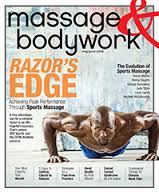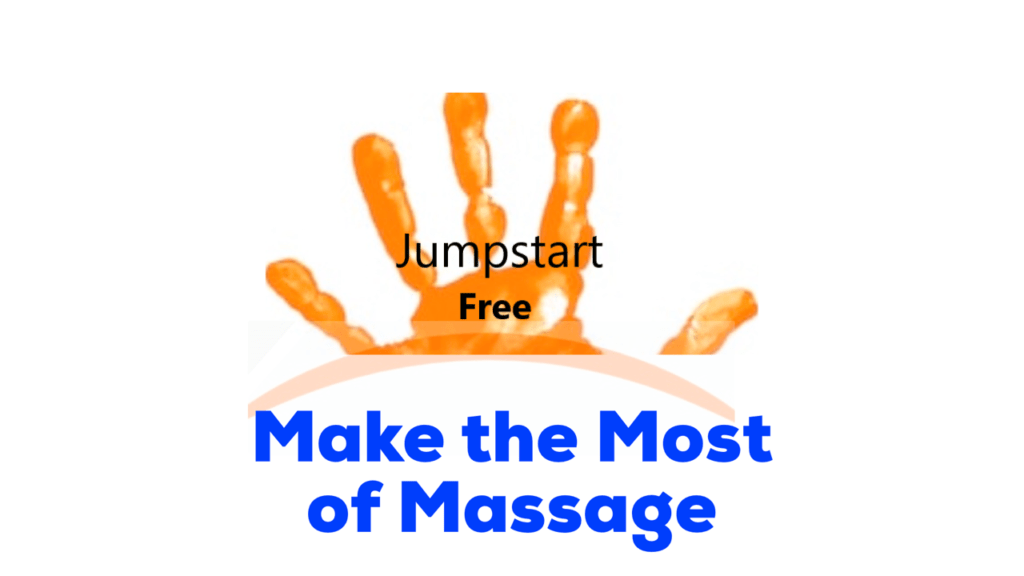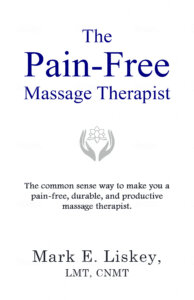Good news! You don’t need to be certified in medical massage to treat sciatica. You don’t even need to know the latest myofascial technique.
In fact, you can do a lot of good with sciatica if you just understand some basic physiological mechanisms and back research which surprisingly (or not) correlates to common sense.
What is Sciatica Really?
Sciatica is a symptom, not a condition. The symptoms are pain in buttock and/or down the leg. The cause is irritation of the sciatica nerve.
We’ve been conditioned to think that most of the time nerve irritation has to do with the spine, like a herniated disc. To this day, I’m guilty of this.
Aadila came in telling me that the doctor said she had sciatica. Her pain was in her buttock and half way down her hamstring.
My first question was: Do you have back pain?
No.
Have you ever had back pain?
Yes.
Where?
(She points to her mid-back.)
I see…how about your lower-back?
No, not that I can remember.
Are you sure?
Pretty sure.
No stiffness?
Nope.
How about when you get up in the morning..?
Well, on occasion…
Aha!
Hold on there, Wilbur! You’re proceeding as if sciatica is a condition—specifically, an impinged nerve at the spine.
According to science writer Paul Ingraham, I’m actually barking up the wrong tree. He says most sciatica arises from muscle “knots” not nerves impinged by a disc or by the narrowing of a vertebral foramen.
That’s fantastic—for us. If it’s not a nerve issues due to a spinal condition, we’ve a better shot at helping a client’s sciatica improve.
Which brings us to good vibrations.
Good Vibrations
I have to tell you, I don’t always trust something that just “feels right.” Why? Because what “feels right” is usually influenced by experiences and knowledge. And those two things can seriously bias objectivity.
Here’s an example of how trusting your gut can go really wrong.
Scott Hornoff was a detective who like his fellow detectives trusted his gut. But then one day, his fellow detectives, trusting their guts, were convinced that Hornoff was the person who murdered a local woman.
Hornoff was tried and found guilty. The problem was, he didn’t do it. And he spent 6 ½ years in jail before he was exonerated.
Most unsettling is that the detectives’ gut feelings never changed. Hornoff became a free man only because the real murderer confessed!
We’re still talking about massage here, right?
Yep.
When you have a muscle ache, you rub it back and forth. That feels like the right thing to do. But does this gut reaction actually help with the pain?
Our survey says…
It sure does!
Vibrating a muscle causes proprioceptive confusion. Ingraham says: “If you move or shake the body at random, the brain gets a deluge of nonsensical proprioceptive data. The nervous system, overwhelmed by the random stimuli, effectively “gives up” and stops resisting the movement: providing you with deep, muscle loosening relaxation!” You can read his article here.
Here’s What I Do
Here’s my technique for vibrating muscles when someone comes in experiencing sciatica.
- I locate a sciatica pain area.
Next I need to know how much pressure to use.
- I press and hold the pain area.
This is the tricky part. Too much pressure can cause more pain. I have safeguards for not pushing too hard. One is the client’s reaction.
I’m looking for him to say “That feels good” or “The pain is lessening” as I press on the area.
If I don’t get one of those answers, I revert to using the pain scale. The short version is: on a pain scale of 1 to 10, I want to press until the client says it’s a 3 (or 4 it’s not acute sciatica). Here’s the longer version: Pain Relief Massage Video: How to Find the Right Pressure.
I hold the pain area until the pain starts to lessen. If it gets worse, I leave the pain area alone for awhile. Eventually, I circle back, but this time I’ll apply less pressure.
Then there’s the piriformis…it can be very reactive because of the sciatica nerve going under it (or in some anomalous cases, through it).
If the person feels zapping in the buttock or down the leg when I’m pressing the piriformis (or around it), I lighten the pressure. And if I’m using thumbs, I’ll try a broader body part, like fists.
If direct pressure is just too painful, I’ll try skin rolling.
Once I get the pressure down, then it’s on to…
- Vibrate the pain area.
I gently pin the pain area and apply the appropriate pressure. Then I vibrate the pain area with a back-and-forth motion keeping my pressure consistent.
For a client with raging sciatica I don’t apply deeper pressure as I’m vibrating like I normally would when working a tight spot. This is sometimes tough for me to control because by nature I’m smidge-deeper-pressure pusher.
I vibrate the pain area long enough for it to feel good, but not so long that it feels annoying. I’ll cut it short when in doubt.
If I really think a smidge deeper pressure might provide more pain relief, I’ll go back to the area and I’ll do the vibration at a smidge deeper level.
And that’s it…well almost…
More Common Sense
Heat is another low cost pain reliever. The heat acts a neurological sedative. When I worked for a chiropractor, we used heat packs from a hydrocollator. But you could simply use a heating pad.
Education can also help. If you’re client is experiencing sciatica, share this research with her.
It says that bed rest is no better than mindfully (pay attention to your back) going about your normal life. This tidbit of info could be HUGE for a person experiencing sciatica pain for the first time. For one, she can stop worrying about whether working is making her sciatica worse.
Fired Up! Ready to Go!
Don’t back down from sciatica.
You have a lot of treatment tools to use like vibration and heat. Not medically sounding enough to compete with the chiro next door who is using spinal decompression (formerly known as spinal traction)?
You can always say you’re using a proprioceptive confusion technique and a neurological sedative device, but you might be on shaky grounds when you whip out the $20 heating pad you had bought on Amazon.
If you’re looking for more info on treating sciatica, I talk about how to NOT make sciatica worse in this article: Don’t Wear a Fancy Red Tie When Treating Sciatica. I learned the NOTs the hard way—by actually making sciatica worse in some of my clients.
Hey, what can I say. There’s a learning curve.
I’m here if you want to talk about a particular case or if you have some sciatica techniques you’d like to share.
And if you want to know about new articles, videos, classes, etc., coming out, just enter your email below. You can unsubscribe whenever you want:-)






